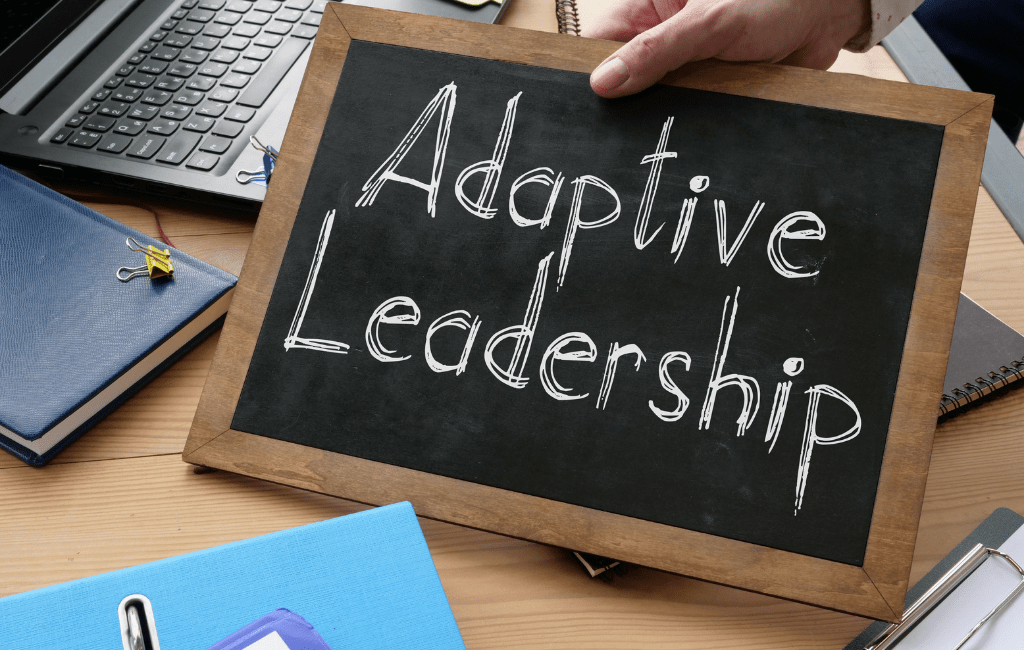“Adaptability is not imitation. It means the power of resistance and assimilation.”- Mahatma Gandhi
While the above quote by one of the greatest leaders of the masses that walked this planet refers to the power of adaptation in general life, the same principle applies to leadership in organizations too.
Changing times call for changing measures, as the adage goes. Dynamic leadership is the need of the hour. If you fail to embrace change and adapt it, your organization is likely to become a sitting duck for your competitors- an easy target to kill and wallop!
I’m sure you don’t want this to happen.
Let’s take a look at this example of Kodak. Remember the photographic film rolls you used in your camera way back in the 80s and 90s?
Once an industry leader, Kodak slipped down into bankruptcy as it was slow to adapt to digital photography.
Watch out for the word adapt! Kodak had to sell many of its patents to come out of bankruptcy.
Blackberry is another name that reminds us of failing to flow with a flow called change.
At one point, there were more than 80 million Blackberry users across the globe including the then President of the most powerful nation in the world- Barack Obama.
The reason for downfall? All things touchscreen and iPhone.
Blackberry didn’t give due importance to touchscreen-based and the iPhone wasted no time in dominating the market.
The failure to innovate meant that Blackberry’s market share dipped to 0.2% by 2016.
See why it’s important? You don’t need to be a rocket scientist to figure out why these once giants were reduced to fringe players of their respective industries.
The message to leaders in the dynamic business environment is simple, “Embrace the change and adapt ASAP to changing environments, or, be ready to pack your bags and go home.”
Table of Contents
- Do You Suck At Adaptability?
- What Is Adaptive Leadership?
- The Adaptive Leadership Model And Two Kinds Of Challenges
- Examples – Technical Challenges And Adaptive Challenges
- What Are Unique Traits Of Adaptive Leaders
- What Are Core Principles Of Adaptive Leadership
- What Are Difficulties In Implementing Adaptive Leadership
- Examples Of Adaptive Leadership
- The Final Word
Do You Suck At Adaptability?
Errr, my question might have raised the eyebrows of a few readers (who also happen to be leaders) already.
I’m not accusing you of being terrible at embracing adaptability, but I get to hear an all too common complaint when it comes to incorporating adaptability into leadership.
It goes like this: “I know adaptive leadership is the need of the hour, but I suck at it!”
Well, don’t curse yourself because you’re not alone in this struggle. The good news is that there’s a solution to any problem
Yes, you can be a great adaptive leader even if you feel you’re stuck in the middle of nowhere. How? You’ll find out as you read on.
What Is Adaptive Leadership?
Introduced by Ronald Heifetz and Marty Linsky, Adaptive leadership can be defined as an act of mobilizing a team of individuals within an organization or a community to adopt new strategies and techniques to cope with changes, and survive and thrive in challenging situations.
Leadership is no more a one-man show where one individual enjoyed wholesome authority and enforced his/her will onto others.

This top-down approach has become obsolete and impractical over the years. No one individual can single-handedly tackle all of the company’s challenges.
Adaptive leadership emphasizes the collective effort of team leaders and individuals to achieve set goals.
If you are a team leader and still think that only you can call all the shots and buck stops with you, you’re grossly mistaken! Leadership is now a team sport where team collaboration reigns supreme.
“Organize your scattered team and turn it into a formidable, highly productive, united workforce with ProofHub. Try it FREE for 14 days!”
We can say that adaptive leadership revolves around three C’s- collaboration, communication, and cooperation.
The Adaptive Leadership Model And Two Kinds Of Challenges
The adaptive leadership model recognizes that there are two kinds of challenges – technical challenges and adaptive challenges.
Ronald Heifetz is of the view that applying technical solutions to resolve adaptive challenges is perhaps the single biggest mistake made by many leaders.
Therefore, managers and team leaders need to draw a fine line between technical and adaptive challenges.
What Separates Technical Challenges And Adaptive Challenges?
Technical Challenges
| Adaptive Challenges
|
Examples – Technical Challenges And Adaptive Challenges
Example 1. Bad internet connection at the workplace is a technical challenge that can be easily identified. Often, technicians can switch to an alternative internet connection, fix loose wiring, or reboot the router to get it working all over again. The disruption and chaos that ensued following a bad internet connection are fixed in a short time by professionals.
Example 2. Addressing conflicts at the workplace, problems that call for a change in attitudes, behaviors, and beliefs are some examples of adaptive challenges. It can take to identify such problems as people may not accept that problem even exists.
What Are Unique Traits Of Adaptive Leaders
What separates great leaders from mediocre leaders? The answer is relatively simple: their ability to easily adapt to changing environments, policies, or ethical standards, and encourage their teams to embrace change via bringing about a significant shift in their behaviors and beliefs.
On the other hand, mediocre or poor leaders resist change and cannot make necessary adjustments in a dynamic work environment, which leads to negativity, lack of progress, and sluggishness.

However, navigating through shifts in technology and behaviors is not something that you can ingrain in your employees’ minds verbally.
Yes, individual and group communication is important, but your team must be properly trained and well-equipped with the latest technology to adapt to change. And not to forget the most important factor- the positive and progressive mindset.
So, the thing is,“ why adaptive leadership is a must-have skill in any leader’s repertoire?”
Read on to know why.
- Adaptive leaders have a thorough understanding of pros and cons of every employee, and manage them accordingly
- Adaptive leaders are high on flexibility i.e. the ability to switch from traditional leadership style to adaptive leadership effortlessly
- Adaptive leaders are motivated to deliver good performance and pass their energy and zeal onto their team members
- Adaptive leaders always have contingency plans in place because they expect plans to change
- Adaptive leaders keep everyone on the same page via swift, fluent communication
- Adaptive leaders promote team collaboration, which invariably results in fewer mistakes and improved quality of work
- Adaptive leaders enjoy productive, cordial relations with their peers
- Adaptive leaders and their teams regularly think outside of the box rather than being restricted to relying on traditional methods
- Adaptive leaders are good at task management. They assign the right people to the right positions after assessing each individual’s specific skills and strengths
- Adaptive leaders empower their teams by providing resources and opportunities to further strengthen their professional competencies
- Adaptive leaders are quite good at picking up non-verbal cues and reading the emotions of their employees. This skill allows them to understand other people and guide their behavior.
- Adaptive leaders are focused on achieving the best results in the easiest possible way. They can bend or break existing rules of structure to yield the desired results.
What Are Core Principles Of Adaptive Leadership
The principles that guide adaptive leadership models are listed below.

- Emotional Intelligence
Emotional intelligence is the core component of leadership. Emotional intelligence can be described as the act of recognizing and responding to yours as well as others’ emotions, overcoming stress, and being conscious of how your words and actions can affect others. Emotional intelligence can consist of the following attributes:
- Self-awareness
- Self-management
- Empathy
- Relationship management
- Effective communication
Adaptive leadership calls for the leaders to display high levels of self-awareness, and how their verbal and non-verbal communication can affect the team.
- Constant Assessment Of Actions
It’s natural to make mistakes along the way. No one can get things done right the first time. Adaptive learning focuses on accepting mistakes, learning from them, and making corrections to the course.
Teams and organizations need to assess their performance at regular intervals, identify strong and weak areas, and make adjustments to deliver better results. In other worlds, constant learning and improvement is the name of the game.
Reaching A Middle Ground
Adaptive leadership focuses on reaching a middle ground so that the organization, external stakeholders, and its competitors too stand to benefit from the solutions you have to offer.
Now, this may sound contradictory if you’re accustomed to operating solely as a competitor, but if you and your competitors can help each other then it’s worth every penny that you invest.
For example, people and organizations competing are appreciating each other on a few independent podcasts. You can create two pods in a day, like Josh Hallmark did, rather than trying to promote your product/service blatantly.
- Organizational Justice
Another rudimentary principle of adaptive leadership is encouraging and nurturing a culture of honesty. Adaptive leaders have a sound knowledge of the best policies that can be introduced to benefit the organization. Also, they can implement such policies effectively in a way that people are receptive to them.
All voices and perspectives are heard and assessed, which makes every employee feel valued and respected. This leads to creating a ripple effect within the organization as more creative ideas are offered. This ushers greater buy-in, which is needed for successful implementation of the solution.
- Embrace Latest Technology
Adaptive leadership should empower their teams with the latest technology to help them achieve more efficiency and productivity while cutting down on time and efforts spent on performing various tasks.
For example, using a top-rated team collaboration and project management software, like ProofHub, can prove to be your biggest shot in the arm. Using this all-in-one tool, your team can be on the same page with each other, stakeholders, and clients in a centralized location.
There’s a clear division of responsibilities, which leads to improved efficiency and better transparency within the organization.
“Worried about the loss of accountability and increasing vagueness in the workplace? It’s time to send SOS to ProofHub for escape! Sign up NOW!”
What Are Difficulties In Implementing Adaptive Leadership
Ronald Heifetz predicted that adaptive leadership won’t be without a few challenges, and he was spot on. Adaptive leadership revolves around experimenting, discovering new ideas, and making scores of adjustments throughout your organization.

You can only expect to survive and sustain changes and thrive when you bring a change in attitudes and policy adjustments.
Given below are some formidable challenges in implementing adaptive leadership.
- Transposing individuals’ values, beliefs, and perceptions is not easy because you’ll have to be disloyal to your past to a certain extent
- Some people don’t want to let go of policies that were introduced when their organization just started its operations
- Adaptive leadership can invite resistance from employees, other stakeholders, or clients. They don’t want to adopt the new policy you want to implement
- Leaders who don’t want to listen to other people’s ideas
While adaptive leadership is about teamwork and collaboration, the fact is that only a handful of leaders have an open-minded approach to take in other people’s suggestions who fail to agree with them.
Examples Of Adaptive Leadership
Let’s take a look at a few real-life adaptive leadership examples that were used by leaders to bring out the best in their employees, which eventually benefited the organization as a whole.
Example 1
Stefanie was a competent, well-respected, and admired manager of her team. She was professional, yet empathetic in her approach to work. She took care of her team like that of a family though she took no excuses when it came to delivering work.
Stefanie resigned and every team member was saddened at her exit. The replacement came soon after. All team members were apprehensive about the new manager’s team management capabilities; they thought the new entrant can never fill the shoes of Stefanie.
The new leader took an adaptive approach as he knew he had big shoes to fill. He could have led from the position of authority, but chose not to do so. He sought the team’s feedback and ideas to ensure they feel valued and respected, just like Stefanie made them feel.
Even his team members didn’t expect him to be so humble and adaptive from the onset. Results were there to see for all in a couple of months. The new manager continued to take fresh ideas continuously from the team.
It didn’t take long for his team to trust and respect him for fostering intra-team collaboration to new heights. He successfully navigated the team through ups and downs, and enjoyed success over the course of his tenure.
“Want to have greater control over teams and projects from a centralized location? Include ProofHub in your managerial arsenal TODAY!”l
Example 2
Highly skilled and well-trained employees of a hugely successful SaaS tool were leaving the organization for competitors. The company registered healthy revenue figures, but the employee turnover started to adversely affect the bottom line.
The company HR was staring down at a formidable challenge, and it had to be dealt effectively sooner than later. If you take traditional approach to solving this problem then you’d be tempted to consider following solutions:
- Maybe you need to give more perks and benefits to employees
- Maybe you need to give them a good hike over their current salaries
- Maybe their managers need to improve their management skills and motivate them better
However, this is not how adaptive leadership tackles such a situation. The HR chose to dive deeper into the root of the problem, and involved the entire upper management into the process to find out whether monetary perks and other incentives were the real reason or it was something else.
It was discovered that the organizational environment was the main culprit. Lack of accountability and placing blame on others for not meeting deadlines had ingrained into the workplace culture. Team managers and the HR team itself were also the part of the problem.
Inputs were gathered from the entire organization to change the culture. Obviously, there were challenges and conflicts in the process, and proposed changes were met with resistance from many in both the top-tier management and teams across various departments.
However, the HR team paved the way for implementing new changes where team accountability reigned supreme. This led to improvement in performance as every individual was responsible for the outcome of task(s) assigned to them.
The Final Word
Although adaptive leadership is met with stiff resistance and calls for strenuous efforts, the results are worth their weight in gold. Organizations implementing adaptive leadership end up registering significant financial and operational benefits.
When everyone’s skills and abilities are maximized under this collective approach, it leads to creating congenial work environments, stronger intra-team bonding, and healthier work relationships with clients.
There’s so much to gain through adaptive leadership that any responsible and result-oriented leader and organization cannot afford to neglect it. What category do you fall into?
